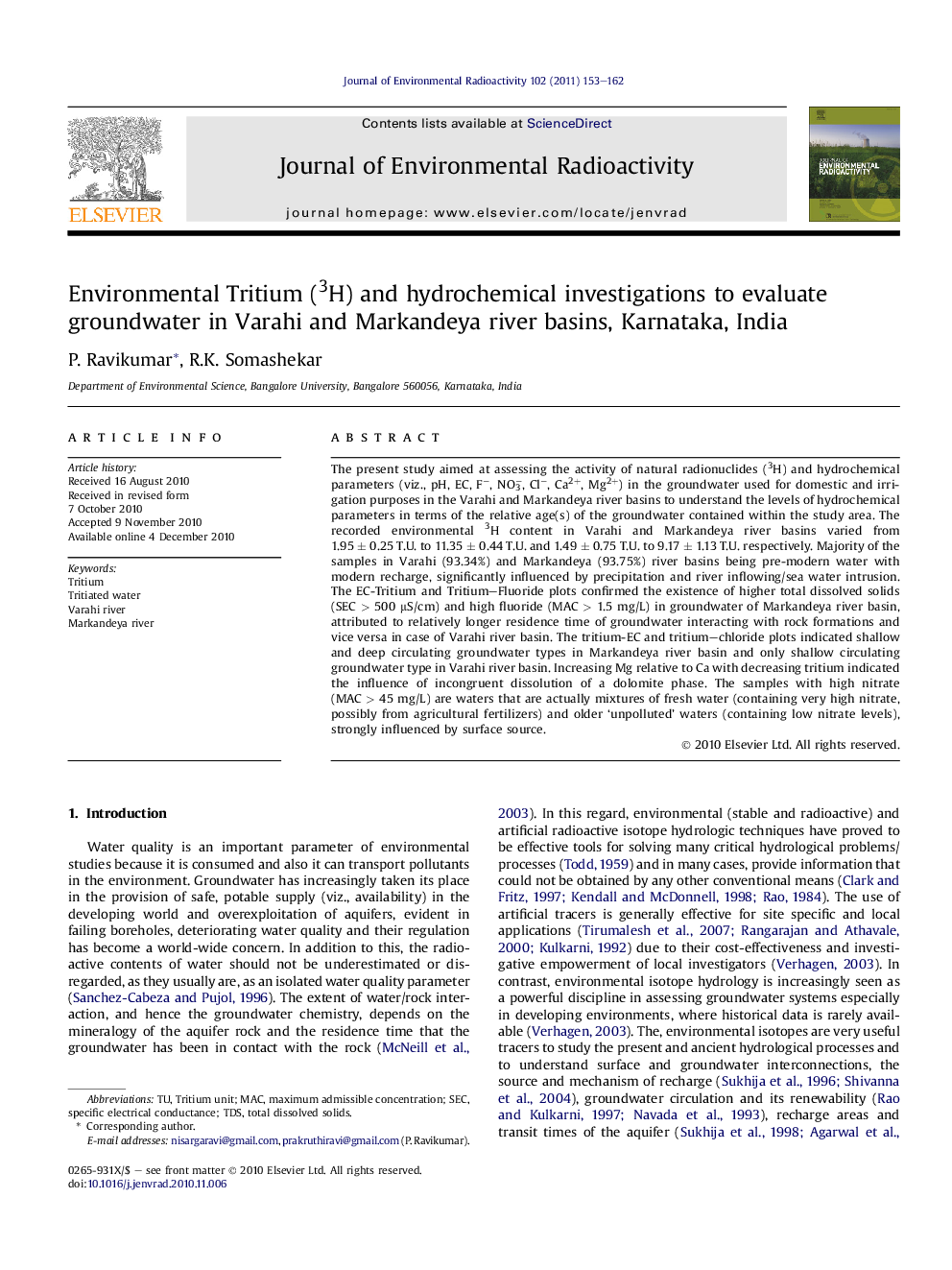| Article ID | Journal | Published Year | Pages | File Type |
|---|---|---|---|---|
| 1738569 | Journal of Environmental Radioactivity | 2011 | 10 Pages |
The present study aimed at assessing the activity of natural radionuclides (3H) and hydrochemical parameters (viz., pH, EC, F−, NO3−, Cl−, Ca2+, Mg2+) in the groundwater used for domestic and irrigation purposes in the Varahi and Markandeya river basins to understand the levels of hydrochemical parameters in terms of the relative age(s) of the groundwater contained within the study area. The recorded environmental 3H content in Varahi and Markandeya river basins varied from 1.95 ± 0.25 T.U. to 11.35 ± 0.44 T.U. and 1.49 ± 0.75 T.U. to 9.17 ± 1.13 T.U. respectively. Majority of the samples in Varahi (93.34%) and Markandeya (93.75%) river basins being pre-modern water with modern recharge, significantly influenced by precipitation and river inflowing/sea water intrusion. The EC-Tritium and Tritium–Fluoride plots confirmed the existence of higher total dissolved solids (SEC > 500 μS/cm) and high fluoride (MAC > 1.5 mg/L) in groundwater of Markandeya river basin, attributed to relatively longer residence time of groundwater interacting with rock formations and vice versa in case of Varahi river basin. The tritium-EC and tritium–chloride plots indicated shallow and deep circulating groundwater types in Markandeya river basin and only shallow circulating groundwater type in Varahi river basin. Increasing Mg relative to Ca with decreasing tritium indicated the influence of incongruent dissolution of a dolomite phase. The samples with high nitrate (MAC > 45 mg/L) are waters that are actually mixtures of fresh water (containing very high nitrate, possibly from agricultural fertilizers) and older ‘unpolluted’ waters (containing low nitrate levels), strongly influenced by surface source.
Research highlights► It is evident that majority of the samples in Varahi (93.34%) and Markandeya (93.75%) river basins exhibited radioactive decay (1–8 T.U.) having a mixture of pre-modern (viz., old water) water with modern (viz., new water) recharge, significantly influenced by precipitation. ► The EC-Tritium and Tritium–Fluoride plots confirmed the existence of higher total dissolved solids (SEC > 500 μS/cm) and high fluoride (MAC > 1.5 mg/L) in groundwater of Markandeya river basin, attributed to relatively longer residence time of groundwater interacting with rock formations and vice versa in case of Varahi river basin. ► Increasing Mg relative to Ca with decreasing tritium indicated the influence of incongruent dissolution of a dolomite phase. ► The samples with high nitrate (MAC > 45 mg/L) are waters that are actually mixtures of fresh water (containing very high nitrate, possibly from agricultural fertilizers) and older ‘unpolluted’ waters (containing low nitrate levels), strongly influenced by surface source.
